 If the former is true, it proves the latter. I’ll confess “yes” to both.
If the former is true, it proves the latter. I’ll confess “yes” to both.
Today at work I was doing some miscellaneous web-related research (aimless surfing? no, no, never), and I came across a page of creative 404 error pages that inspired me to finally do something interesting with my own 404 error message.
Having lived in Atlanta (area code 404), I initially set out to do something that played off that. (I know, very original. I just wanted to make sure not to settle for “Tha 404.”) But it wasn’t long before my roadgeek tendencies kicked in and I thought of something even better.
Here’s my 404 page. (The image at right is a spoiler, of course.)
The sign image is (mostly) my own creation in Photoshop: I swiped the shield images for I-16 and Georgia 404 as SVGs from their respective Wikipedia pages, and the font is courtesy of another roadgeek. Whenever I start to question myself, I am reassured that there are others out there even sicker than I am.
Incidentally, there really is a Georgia 404, although the only place you’ll see a sign for it is on a small spur route near Savannah. Georgia’s Department of Transportation has a funny little quirk in that it has given all freeway-grade roads a state highway designation in the 400 range. (I suppose the “4” indicates 4 or more lanes.) As far as I know (and as this PDF from the GDOT website seems to confirm), there’s only one road in the system for which this is the main designation, however: Georgia 400, which is a main commuter artery running north (well, northish) from Buckhead out to the north-central suburbs and beyond into Deliverance country, since both I-75 and I-85 veer off diagonally out of the city (into the northwest and northeast suburbs and beyond into Deliverance country).
All of the other freeways in the state have a “4xx” designation too, but there are generally no signs indicating such, because they all also have a familiar designation, usually an Interstate number.
As it happens, Georgia 404 is better known as I-16 (hence the double shields on my sign image), which, interestingly enough, is not really “interstate” even though it’s an “Interstate”; it starts in Macon and ends in Savannah.